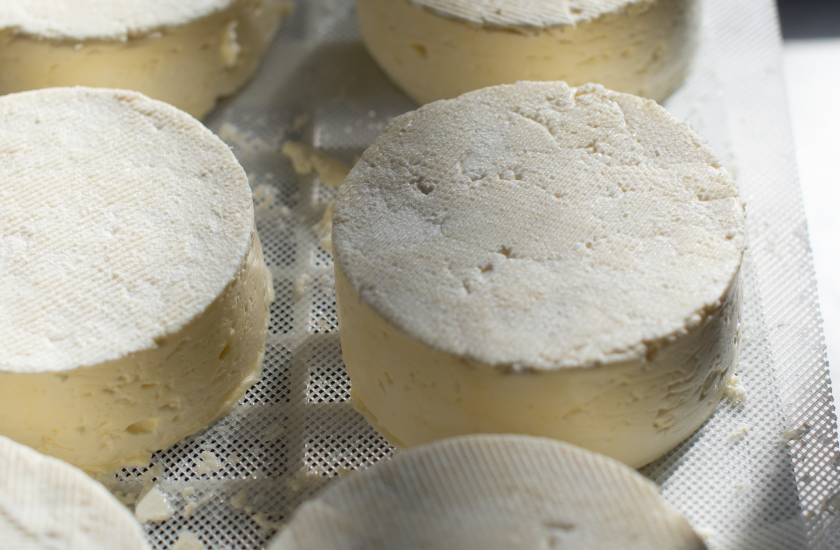Cheese
-
Beefs
Beefs
-
Chicken
Chicken
-
Pork
Pork
-
Eggs
Eggs
-
Fish
Fish
-
Lamb
Lamb
-
Goat Meat
Goat Meat
-
Honey
Honey
-
Sea Food
Sea Food
-
Milk
Milk
-
Cheese
Cheese
-
Yogurt
Yogurt
Our Brochures
Contact Us
Social Media


Cheese is a dairy product produced in wide ranges of flavors, textures, and forms by coagulation of the milk protein casein. It comprises proteins and fat from milk (usually the milk of cows, buffalo, goats, or sheep). During production, milk is usually acidified and either the enzymes of rennet or bacterial enzymes with similar activity are added to cause the casein to coagulate. The solid curds are then separated from the liquid whey and pressed into finished cheese. Some cheeses have aromatic molds on the rind, the outer layer, or throughout.
Cheese Types
There are many types of cheese, with around 500 different varieties recognized by the International Dairy Federation, more than 400 identified by Walter and Hargrove, more than 500 by Burkhalter, and more than 1,000 by Sandine and Elliker. The varieties may be grouped or classified into types according to criteria such as length of ageing, texture, methods of making, fat content, animal milk, country or region of origin, etc.—with these criteria either being used singly or in combination, but with no single method being universally used. The method most commonly and traditionally used is based on moisture content, which is then further discriminated by fat content and curing or ripening methods. Some attempts have been made to rationalise the classification of cheese—a scheme was proposed by Pieter Walstra which uses the primary and secondary starter combined with moisture content, and Walter and Hargrove suggested classifying by production methods which produces 18 types, which are then further grouped by moisture content.
Nutritional and Health
The nutritional value of cheese varies widely. Cottage cheese may consist of 4% fat and 11% protein while some whey cheeses are 15% fat and 11% protein, and triple-crème cheeses are 36% fat and 7% protein. In general, cheese is a rich source (20% or more of the Daily Value, DV) of calcium, protein, phosphorus, sodium and saturated fat. A 28-gram (one ounce) serving of cheddar cheese contains about 7 grams (0.25 oz) of protein and 202 milligrams of calcium.
Nutritionally, cheese is essentially concentrated milk, but altered by the culturing and aging processes: it takes about 200 grams (7.1 oz) of milk to provide that much protein, and 150 grams (5.3 oz) to equal the calcium, though values for water-soluble vitamins and minerals can vary widely.
Source Of: Calcium, Protein, Phosphorus, Vitamin B12 and Vitamin A.
The nutrients in cheese vary. One ounce of hard cheese, or a wedge about the size of your thumb, contains about 120 calories, 8 grams (g) of protein, 6 g saturated fat, and 180 milligrams (mg) of calcium. A half-cup of soft cheese like 4% full-fat cottage cheese has about 120 calories, 14 g protein, 3 g saturated fat, and 80 mg of calcium. Most cheeses are high in sodium with 300-450 mg per serving because salt is a key ingredient to hold moisture and prevent overgrowth of bacteria. However, some cheeses like goat, whole-milk mozzarella, and Swiss are low in sodium with only 50-100 mg per serving.
Countries That Eat the Most Cheese (Pounds Per Capita Per Year):
- France: 57.9
- Germany: 53.2
- Luxembourg: 53.2
- Iceland: 53.2
- Greece: 51.5
- Finland: 49.5
- Italy: 48.0
- Switzerland: 48
- Estonia: 45.8
- Netherlands: 42.7
Most of these countries are lactose intolerant, and still make the best cheese in the world. When it comes to production, and not consumption, the United States holds a tight position here, despite not making the top 10 list for consumption. The United States is only producing 34.1 pounds of cheese per capita annually, but exporting over $1.6 billion annually and helping the large cheese consumers stay on the list.
